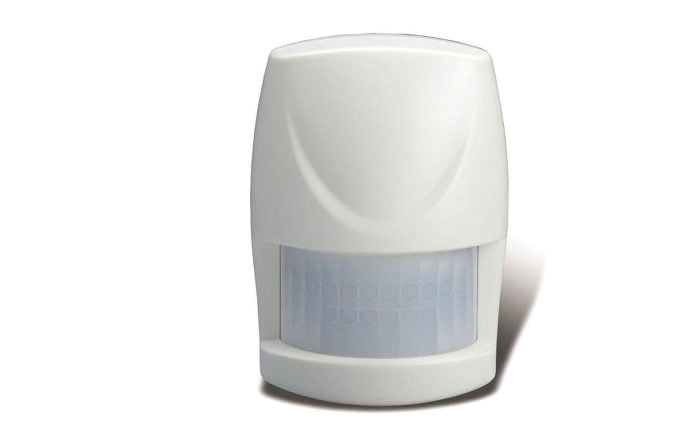What Causes Constant False Alarms?
♦ What Causes Constant False Alarms? – We are having endless false alarms from a single location on a commercial site – we’ve tried 3 PIR sensors from 2 different manufacturers – could something in the area be causing the trouble?
A: If you’re having false alarm problems have a look around the room and see if you can spot sources of EMI that could be causing issues. High EMI areas are found near TVs, computer monitors (including laptop computers), fluorescent lights, light dimmer controls, and improperly grounded equipment. In almost all cases EMI field strength drops off one you get about a meter away from the source. You can shield out strong electrical fields by using a conductive sheet material like an aluminium window screen with the shield connected to electrical ground. If there’s nothing obvious near the sensor, check in the ceiling or in the next room.
Other problem areas can include high-intensity halogen lamps, or floor lamps with 12-volt transformers built into their bases. These can create a field that extends 3 or more feet from the source. Fluoros have smaller transformers, so they have little magnetic field past 3 feet.
Anything with a motor in it, including a fridge, a freezer, a garage roller door etc, produces a strong magnetic field while energised – the higher, the power, the stronger the field. You move out of the field once you’re a metre away from vacuum cleaners, motorized alarm clocks, and electric can openers, and 2 metres away from washing machines and electric motors.
Also troublesome can be non-localized magnetic fields caused by household plumbing carrying current. It’s most common when the cold water pipe enters the opposite side of the building from the power line connection. Safety codes require that the indoor plumbing be connected to the neutral wire of the power line, resulting in current flow. A plumber can reduce magnetic field which results from this situation by installing a non-conductive coupling on the cold water pipe just outside the building.
In some older homes the hot and neutral power wires are not bundled closely together – instead, they form a big loop with a gap between them. This creates a magnetic field that exists only when certain appliances are on, even if those appliances themselves are low-field. The problem can be solved by using an extension cord to change to a different wall outlet, so current is carried through a different part of the in-wall wiring. Non-localized fields due to household wiring are usually highest in the room next to where the power line connects or where there is a circuit breaker box.
Shielding for magnetic fields is more difficult than shielding electric fields. Sheets of galvanized mild steel can solve problems. Place 2 thin layers of shield rather than one thicker layer. Shielding should be placed so it is between device and the high-field source. Having said all this, the best solution is to keep as far away from high-field areas as you can without compromising security. Move the sensor to the opposite wall, use a wireless sensor, install detection on approaches to the space and remove the sensor.
You might also upgrade the sensor to a high quality dual technology external unit optioned for rugged environments.
#SEN #SENnews #security #electronics











